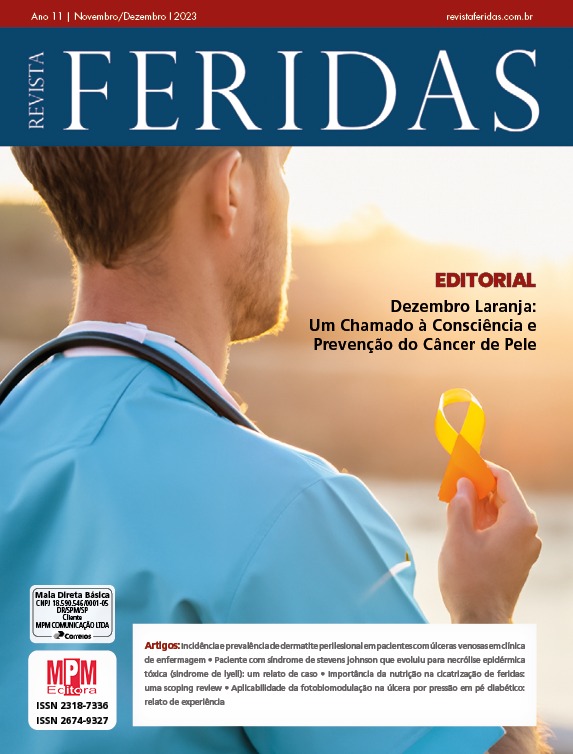PACIENTE COM SÍNDROME DE STEVENS JOHNSON QUE EVOLUIU PARA NECRÓLISE EPIDÉRMICA TÓXICA (SINDROME DE LYELL): UM RELATO DE CASO
DOI:
https://doi.org/10.36489/feridas.2023v11i61p2241-2247Palavras-chave:
Doenças raras, Dermatopatia, Transtornos da Pele e dos Tecidos Subcutâneos, Doença tropical.Resumo
Introdução: Essa síndrome é uma afecção grave de pele que provoca grandes áreas de descamação afetando mais de 30% do corpo. Objetivo: Realizar um estudo de caso de um paciente portador da síndrome de Stevens Johnson que evoluiu para necrólise epidérmica tóxica (Síndrome de Lyell). Metodologia: Trata-se de uma pesquisa retrospectiva de caráter descritivo com abordagem quantitativa onde as variáveis utilizadas foram retiradas do prontuário eletrônico do paciente. Estudo de caso: Deu entrada L.A.S, gênero feminino, 41 anos apresentando edema em face e lesões vesico bolhosas, algumas já rompidas e outras em estágio crostoso, com base eritematosa e descamativa, pruriginosas, acometendo mucosa oral, face, tórax, dorso, abdômen, membros superiores e inferiores, mais evidente em dorso e lábios, de início em região da base do pescoço e que posteriormente se disseminou por todo o corpo. Informa que está há sete dias em uso de fármacos, por automedicação. A mesma foi diagnosticada com Síndrome de Stevens Johnson que evoluiu para necrólise epidérmica tóxica (síndrome de Lyell) possivelmente desencadeada por uso de fármacos. Conclusão: O uso de fármacos de maneira incorreta ou irracional pode trazer serias consequências como: reações alérgicas, dependência e até a morte. Entre os riscos mais frequentes para a saúde daqueles que estão habituados a se automedicar estão o perigo de intoxicação e resistência.



